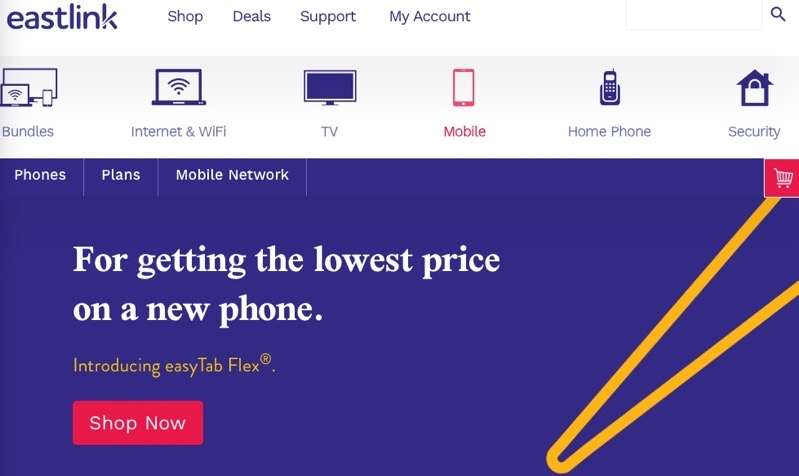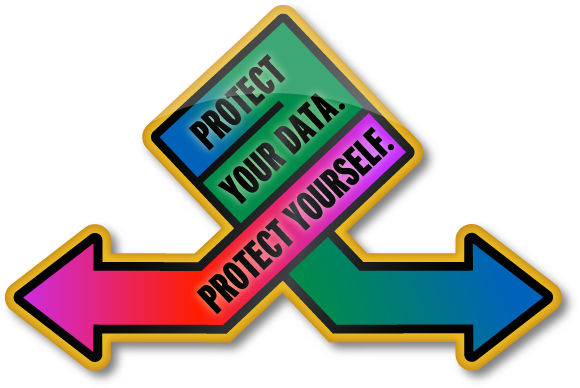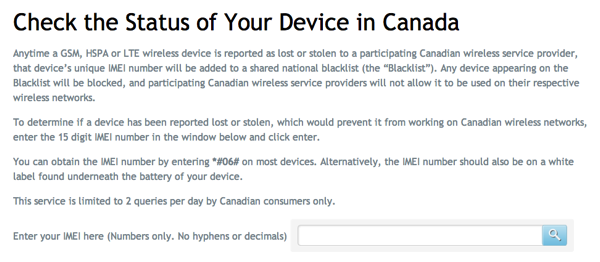
Canadian Carriers Launch National Stolen Cellphone Blacklist Program [u]

The Canadian Wireless Telecommunications Association (CWTA), which represents a consortium of wireless carriers in Canada such as Rogers, Telus and Bell, EastLink, Videotron, SaskTel and MTS, has finally launched their national blacklist program to combat stolen cellphone theft. The program was first announced last fall, a move applauded by the CRTC.
Starting today, the authorization of any GSM, HSPA, HSPA+ or LTE wireless device on participating Canadian carrier networks will include IMEI verification to ensure it has not been reported lost or stolen, as of Sept. 30, 2013. The blacklist also includes devices reported lost or stolen by US carriers which are part of the GSMA IMEI Database.
“Canadians are among the world’s fastest adopters and heaviest users of sophisticated smartphones,” said CWTA President & CEO Bernard Lord. “Not only will this national blacklist help to make their smartphones a less valuable target for criminals, but the industry has also taken steps to help Canadian consumersidentify if a pre-owned device has previously been reported as lost or stolen.”
Canadians can check if their devices have been stolen by going to ProtectYourData.ca, as a new tool now allows users to enter in their IMEI to find out if their present device has been blacklisted. If the device has been blacklisted, it won’t work on any participating Canadian network. The CWTA calls this tool “the first of its kind in the world that utilizes the GSMA IMEI Database”.

CACP President Chief Constable Jim Chu, in the press release supports this move:
“On behalf of the Canadian Association of Chiefs of Police (CACP), I would like to commend the CWTA and its members for their rapid response to implement thismuch needed public safety tool,”
“Less than a year ago, we identified to the CWTA the seriousness of cellphone theft and the associated violent crime which was of growing concern to law enforcement and communities throughout Canada. This important action by theindustry will have a direct impact on reducing this gratuitous crime.”
iOS 7 features a new security feature called Activation Lock which requires lost or stolen iOS devices to require a user’s Apple ID password to activate if restored.
How to find out the IMEI on your iPhone? Go to Settings > General > About > IMEI
Essentially, if you’re buying a used phone, it would be prudent to enter in the device’s IMEI over at ProtectYourData.ca to ensure the device you’re buying can be activated and not blacklisted as lost or stolen.
This new blacklisted IMEI program is a great idea considering the iPhone has become a common target for thieves.
Update: Telus has sent the following statement regarding this new program:
As you know smartphone theft has emerged as a real problem in Canada over the last few years. You may be aware that TELUS has been a part of a national coalition of carriers working together against smartphone theft with this new IMEI blacklist database. In fact, TELUS has been taking strong action against handset theft since well before it became a public issue – we have been keeping a log of devices stolen from TELUS and sharing that information with other carriers; we have also refused to reactivate any device reported as stolen.
This action and continuing leadership on industry issues is just one example of how we put our customers first. We take issues like smartphone theft to heart; and we’ve been pressing the industry as a whole to get involved – and today we’re excited to be sharing this news from CWTA.
Update 2: SaskTel has provided more details on its participation in this program, stating it has created its own system to monitor internal black-listed IMEIs, which will connect to the national IMEI database:
SaskTel has deployed an Equipment Identity Register (EIR) on its network to keep its own internal list of black-listed IMEIs. The EIR will connect to the IMEI database to share the latest list of black-listed devices with other carriers. The IMEI database takes black-list data from all Canadian and U.S. carriers that subscribe to the GSMA and compiles into one national black-list registry. When the SaskTel EIR downloads the latest black-list, all devices reported as lost or stolen by other carriers up to the previous day would also be capable of being blocked on the SaskTel network.

